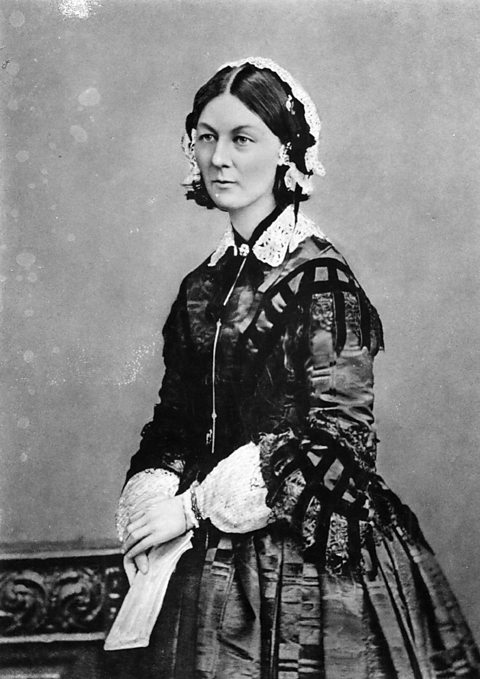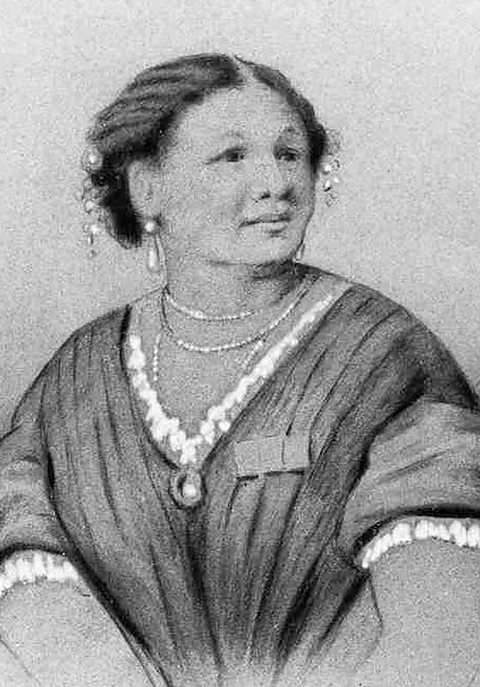Changes in care and treatment - hospitals
The care and treatment that patients received in hospital vastly changed in the years c.1700 to c.1900.
Hospitals in the 19th century
Hospitals in the early 19th century were not always safe. Many patients would die because of the conditions on the wards, such as:
- few toilets and poor sewerage systemA series of underground pipes that take away waste water to be cleaned and re-used.
- overcrowded wards with a lack of fresh air
- a lack of cleanliness, which led to the spread of infection
Rather than there being much criticism of standards in hospitals, sometimes untrained nurses were criticised for being ãdrunkã on hospital wards. Female medical workers were often not properly recognised for the hard work and dedication they displayed towards their patients.
Florence Nightingale

Florence Nightingale trained to become a nurse in Germany before working in a hospital in London. When the Crimean WarA war from 1853 to 1856, between Britain, France and Russia. broke out in 1853, she was asked by the government to look after injured soldiers in the army hospital in Scutari. Nightingale accepted and took 38 nurses and 15 nuns with her.
Nightingale was shocked at the conditions she found. The overworked medical staff were not being given the proper supplies of either food or medicine, and things were extremely dirty. Infections among the patients were common - the soldiers could come in with a wound or injury but catch an illness such as typhus, typhoid, cholera or dysentery while they were in the hospital. The numbers of deaths from infection and illness shocked Nightingale and her staff.
Immediately, with her nurses, Nightingale worked hard to improve hospital conditions and establish better practices of cleanliness. This led to a fall in the death rate from 40 per cent to 2 per cent. Some of the changes put in place in the hospital included:
- ensuring there was regular hand washing
- making improvements to sewerage
- making improvements to ventilation
The influence of Florence Nightingale
On her return to Britain, Nightingale continued to improve the care given in hospitals and the training of nurses:
- She wrote two books that influenced improvements across the world. These were Notes on Nursing (1859) and Notes on Hospitals (1863).
- She opened her first Nightingale School for Nurses in 1860.
Nightingale had always believed that disease was caused by miasmaSmells from decomposing material, such as animal and human waste, that were thought to cause disease. Therefore, she concentrated on keeping the wards and patients clean to remove the substances that would cause 'bad air'. She passed these ideas on to the nurses who trained in her schools.
Mary Seacole

Mary Seacole was a Jamaican businesswoman and healer who had considerable experience of helping British soldiers and treating those with diseases such as cholera.
She volunteered to travel to Crimea to help the war effort there. However, she was refused passage by several powerful figures. Nightingale was reluctant to meet with her or appoint Seacole to her nursing staff.
Seacole paid for her own travel to Crimea and set up a hostel there, having met with Nightingale briefly. The ãBritish Hotelã offered rest and recovery for British officers and Seacole was affectionately known as Mother Seacole by the soldiers.
Developments in hospitals
Hospitals in the 19th century could vary in size, funding and organisation. There was an increase in small cottage hospitals and voluntary hospitals during this period. They were paid for by charity from the wealthy, while doctors worked there for free. Some working people would be treated in these hospitals if they paid into a fund to cover the cost of their treatments. Rich people continued to pay for doctors to treat them at home.
The very poor were assessed by the authorities. If their situation was considered desperate, they were admitted to a workhouse A place where the homeless poor were sent in 19th century England. After 1867, most workhouses had an infirmaryA hospital. to treat the sick and elderly.
Hospitals where patients could be isolated, known as fever hospitals, were established for those suffering with infectious disease A disease spread from one person to another. such as smallpox and scarlet fever. Their aim was to treat those suffering while separating them from the general public.